Andie Parry, Ashka Jhaveri, Johanna Moore, Annika Ganzeveld, and Amin Soltani
Key Takeaways
- Incursions by Hamas into southern Israel have slowed since October 9. Palestinian militias in Gaza are using drones and rockets to strike towns in northern and southern Israel.
- The Lions’ Den—a West Bank-based Palestinian militia—mobilized supporters to hold marches and engage in small arms clashes with Israeli security forces. Hamas is calling on its supporters in the West Bank to storm Jerusalem on October 13.
- Lebanese Hezbollah fired missiles, including anti-tank munitions, at Israeli security forces in northern Israel.
- Members of Iran’s Axis of Resistance have articulated the thresholds at which they would intervene in the war against Israel. These threats highlight the risk of the war expanding throughout the region.
Gaza Strip
Hamas incursions into southern Israel by land and sea have slowed since October 9.[1] Palestinian militant groups are now relying on rocket barrages and attack drones to hit towns in northern and southern Israel.[2] Rocket fire from Gaza extended north to Haifa and multiple barrages have hit Tel Aviv.[3] The Hamas spokesperson warned Israeli civilians to evacuate Ashkelon near the Gaza border before the group launched hundreds of rockets on October 10, claiming the attack was retribution for Israeli airstrikes on Gaza.[4] Hamas warnings have not preceded such rocket barrages previously. Israel conducted strikes in over 1,270 locations in Gaza and killed at least three Hamas leaders over the two-day period.[5] The Israel Defense Forces (IDF) spokesperson stated early on October 10 that its forces regained control of the Gaza border.[6] Clashes continued in isolated pockets immediately north and east of the Gaza Strip on October 10 and 11, however.[7]
West Bank
The Lions’ Den—a West Bank-based Palestinian militia—mobilized supporters to hold marches and engage in small arms clashes with Israeli security forces. Small arms clashes and marches took place in approximately 19 locations across the West Bank in response to the Lions’ Den call for supporters to take to the street at 10:00 am EST.[8] Hamas released a statement separately from the Lions’ Den calling on its supporters in the West Bank to storm Jerusalem on October 13.[9] These separate calls may indicate that Palestinian militias are struggling to coordinate their mobilization efforts across Gaza and the West Bank.Supporters of The Lion’s Den last responded to the group’s calls to demonstrate and conduct attacks on military and civilian targets on October 9, as CTP and ISW previously reported.[10] CTP and ISW reported that leadership from the Palestinian Islamic Jihad (PIJ), Fatah, and the Al Quds Brigade were quick to pledge their support to Hamas’s operation and issued various calls for militia members and civilians to take up arms.[11] These groups have refrained from explicitly calling on supporters to conduct acts of violence against Israelis, however.
South Lebanon and the Golan Heights
Lebanese Hezbollah (LH) fired missiles, including anti-tank munitions, at Israeli security forces in northern Israel. LH claimed responsibility for firing anti-tank missiles at IDF positions in northern Israel on October 10 and 11, which prompted Israeli retaliatory attacks into Lebanon.[12] LH said an attack using a guided missile on October 11 was a firm response to the killing of its fighters in an Israeli airstrike on October 9.[13] LH launched an attempted infiltration to capture an Israeli town on its northern border on October 11.[14] Unspecified militants also launched rocket barrages into open areas in northern Israel on October 9 and 10.[15]
The IDF responded to the attacks by conducting airstrikes on LH-affiliated military sites.[16] The IDF announced on October 11 that there was no incursion into Israeli airspace following reports of the Israeli Red Alert sirens sounding in several towns.[17] CTP and ISW previously reported that LH conducted artillery strikes into Israel for the second consecutive day, and at least six PIJ members attempted to cross into Israeli territory from southern Lebanon from October 8-9. CTP and ISW also previously assessed that LH clashes with Israeli security forces in addition to attacks in the West Bank could expand the war into a second front.
Unidentified militants launched rockets into Israeli territory from Syria on October 10.[18] The IDF responded to the launches with artillery and mortar fire into Syria.[19] UK-based opposition media Syrian Observatory for Human Rights said a Palestinian group working with LH in Syria territory was responsible for the attack.[20] Palestinian militants in Syria conducted rocket attacks from the Golan Heights into Israel in April 2023 in retaliation for Israeli security forces raiding the Al Aqsa Mosque in Jerusalem.[21] A pro-regime milblogger reported on October 10 that Syria will target Israeli airbases to reduce the Israeli Air Forces’ ability to operate.[22] A Syrian Arab Army soldier held up a sign praising Palestinians and pledging support.[23] The rocket fire is the first time that militants in Syria have attacked Israel during the war and is consistent with the threat of a multi-front war against Israel.
Pro-Syrian regime forces have deployed to the border between Syria and Israeli territory since October 9. The Syrian Social Nationalist Party’s (SSNP) militant wing, the Eagles of the Whirlwind, deployed forces and promised support on October 9.[24] The SSNP is an ally of LH and has fought alongside LH militants in Beirut during the conflict in 2008.[25] LH personnel left Deir ez Zor Province for Lebanon on October 10 although ISW cannot confirm the intention behind the deployment.[26] The Islamic Revolutionary Guard Corps (IRGC) announced on October 11 that it seeks to recruit 1,000 men from Deir ez Zor Province for a 20–30-day training before deploying to Israel.[27] Iran has sought to achieve total hegemony over Deir ez Zor Province since May 2023 and uses its military positioning there to threaten the US force presence in eastern Syria.[28] The deployment to southern Syria suggests Iran is giving priority to amassing forces in southern Syria, which is consistent with the threat of another front opening in the war on Israel.
Iran and Axis of Resistance
Members of Iran’s Axis of Resistance have articulated the thresholds at which they would intervene in the war against Israel. The top leadership from Iranian-backed Iraqi militias Kataib Seyyed ol Shohada, Ashab al Kahf, Asaib Ahl al Haq, Kataib Hezbollah, and the Badr Organization threatened to strike US targets if the United States intervenes in Hamas’ war with Israel.[29]
- Head of the Iranian-backed Badr Organization Hadi al Ameri threatened to attack US forces if the United States intervenes in the war to support Israel. Ameri’s statement came after the United States announced it will send a carrier strike group to the eastern Mediterranean Sea to support Israel and will supply Israeli forces with military equipment and ammunition.[30]
- An Iranian Foreign Affairs Ministry official warned on October 9 that Iran would give a “devastating response” if Israel hit Iranian territory by attacking from Syria, Lebanon, and Yemen—implicitly drawing in actors from Iran’s Axis of Resistance.[31]
Graphic Sources[32]
Iranian officials and media accused Israel of committing war crimes in Gaza, promoted a multi-front offensive against Israel, and emphasized Israel’s military and intelligence failure on October 11. Iranian state media and officials accused Israel of using white phosphorous bombs against Gaza civilians and described Israel’s siege of Gaza as a “genocide” and “massacre.”[33] White phosphorous is an incendiary chemical substance that the IDF used in military operations in Gaza between 2008 and 2009.[34]
- Foreign Affairs Minister Hossein Amir Abdollahian described Israel’s siege as a “systematic war crime against humanity” during a phone call with International Red Cross head Mirjana Spoljaric Egger.[35] Iranian state television also published a video depicting the IRGC, Hamas, LH, and Badr Organization preparing to attack Jerusalem.[36]
- Parliamentary National Security and Foreign Policy Committee member Abbas Golrou stated that the continuation of Israeli strikes on Gaza could drive non-Palestinian Arabs and LH to join the war against Israel.[37] Golrou added that the Syrian people could use the current conflict to try to “liberate” the Golan Heights from Israel.
- IRGC-affiliated media similarly argued that an American intervention would escalate and expand the existing conflict.[38] Iranian officials and media also echoed Supreme Leader Ali Khamenei’s October 10 claim that Israel has suffered an “irreparable” military and intelligence failure.[39]
Iran is messaging the above to advance the following objectives:
- Unravel the Israel-Saudi Arabia normalization process. Western media reported throughout August and September 2023 that Israel and Saudi Arabia may be close to reaching a normalization agreement that would include security cooperation and mutual defense.[40] Supreme Leader Ali Khamenei warned regional states on October 3 not to “gamble” their security on normalizing relations with Israel.[41] Foreign Affairs Minister Hossein Amir Abdollahian has furthermore been leading a political effort since October 8 to unify Arab countries in condemning the Israeli attacks on Gaza.[42] Iranian media has similarly saturated the regional media space with articles arguing that an Israeli-Saudi normalization is now impossible given Israel’s military-intelligence failure and the “genocidal” Israeli response in Gaza.[43]
- Portray Israel as weak. Senior Iranian political and military officials, including Supreme Leader Foreign Affairs Adviser Ali Akbar Velayati, Parliament Speaker Mohammad Bagher Ghalibaf, Armed Forces General Staff Chief Major General Mohammad Bagheri, and IRGC Commander Major General Hossein Salami, have subsequently echoed Khamenei’s warning, arguing that the October 7 Hamas attack demonstrated Israel’s military weakness and therefore its inability to provide security to the states seeking to normalize relations with it.[44]
- Generate momentum for further conflict. Iranian officials and media have since October 8 repeatedly referenced Israel’s military weakness and intelligence failures during the Hamas surprise attack, portraying Israel as vulnerable.[45] These same officials and media have used the Israeli response to the attack to portray Israel as “genocidal.”[46] Several Iranian-backed militant groups and other non-Iranian-backed groups have since expressed interest in joining the conflict with Israel. Western and Israeli officials and media have expressed concern about the potential expansion of the conflict to areas beyond Gaza and to groups other than Hamas.[47] Iranian officials have previously outlined Iran’s long-term strategy to eventually embroil Israel in a multi-front war.[48]
Iranian officials continued to deny on October 10 and 11 Iran's involvement in Hamas’ ground and air attack against Israel. The Wall Street Journal reported on October 8 that Iran had helped plan the Al Aqsa Flood Operation in meetings with representatives from Hamas, LH, and PIJ in Beirut since August 2023.[49] Supreme Leader Ali Khamenei praised Hamas’ attack but denied any Iranian involvement in a speech at the Imam Ali Army Officer University in Tehran on October 10.[50] Khamenei stated that individuals who believe Iran was involved “underestimate” the Palestinians’ ability to conduct attacks on their own. Khamenei stressed that Israel brought the attack upon itself by committing crimes against Palestinians “for many years.” Hardline and reformist officials reiterated Iran’s non-involvement in the conflict on October 11.[51]
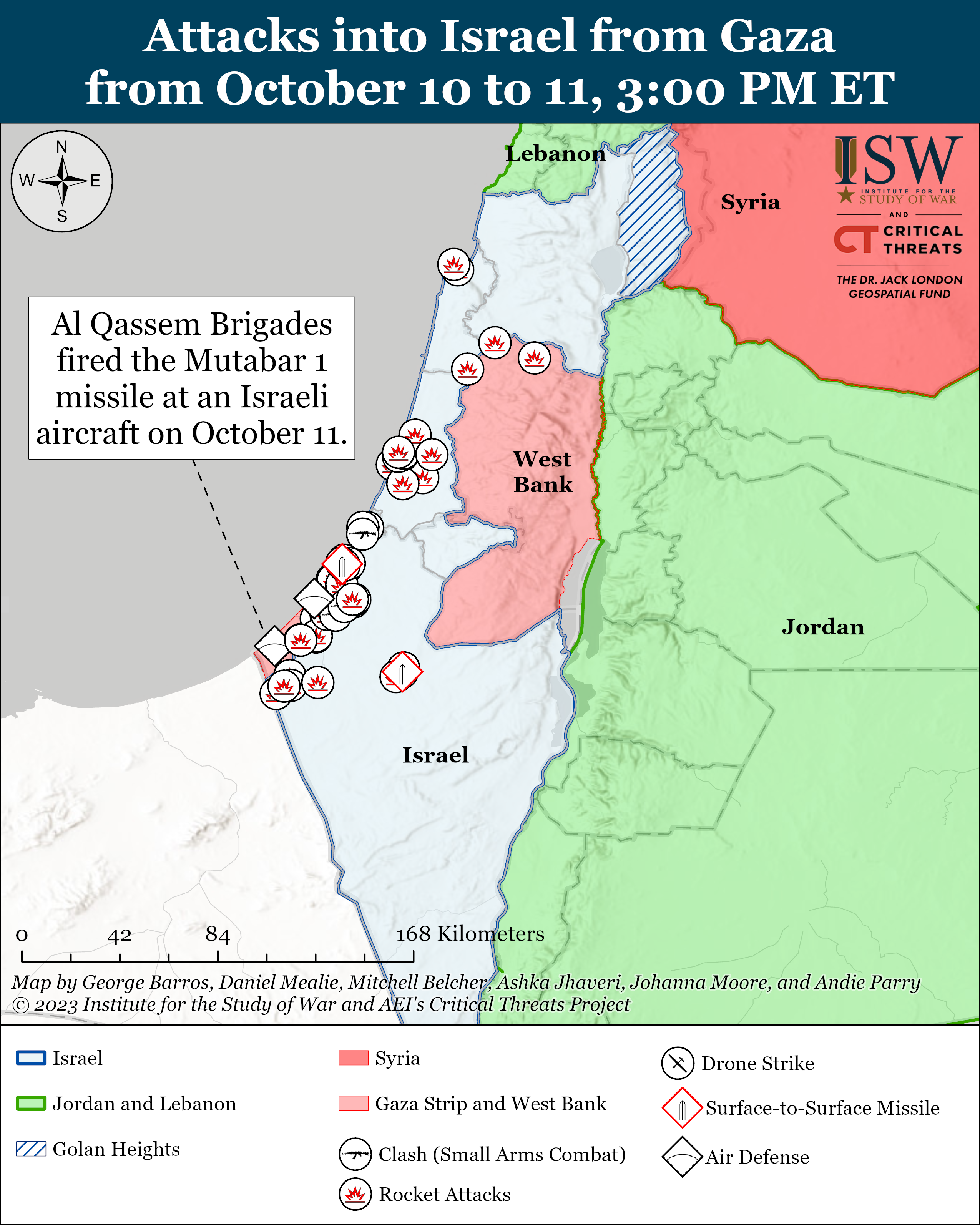
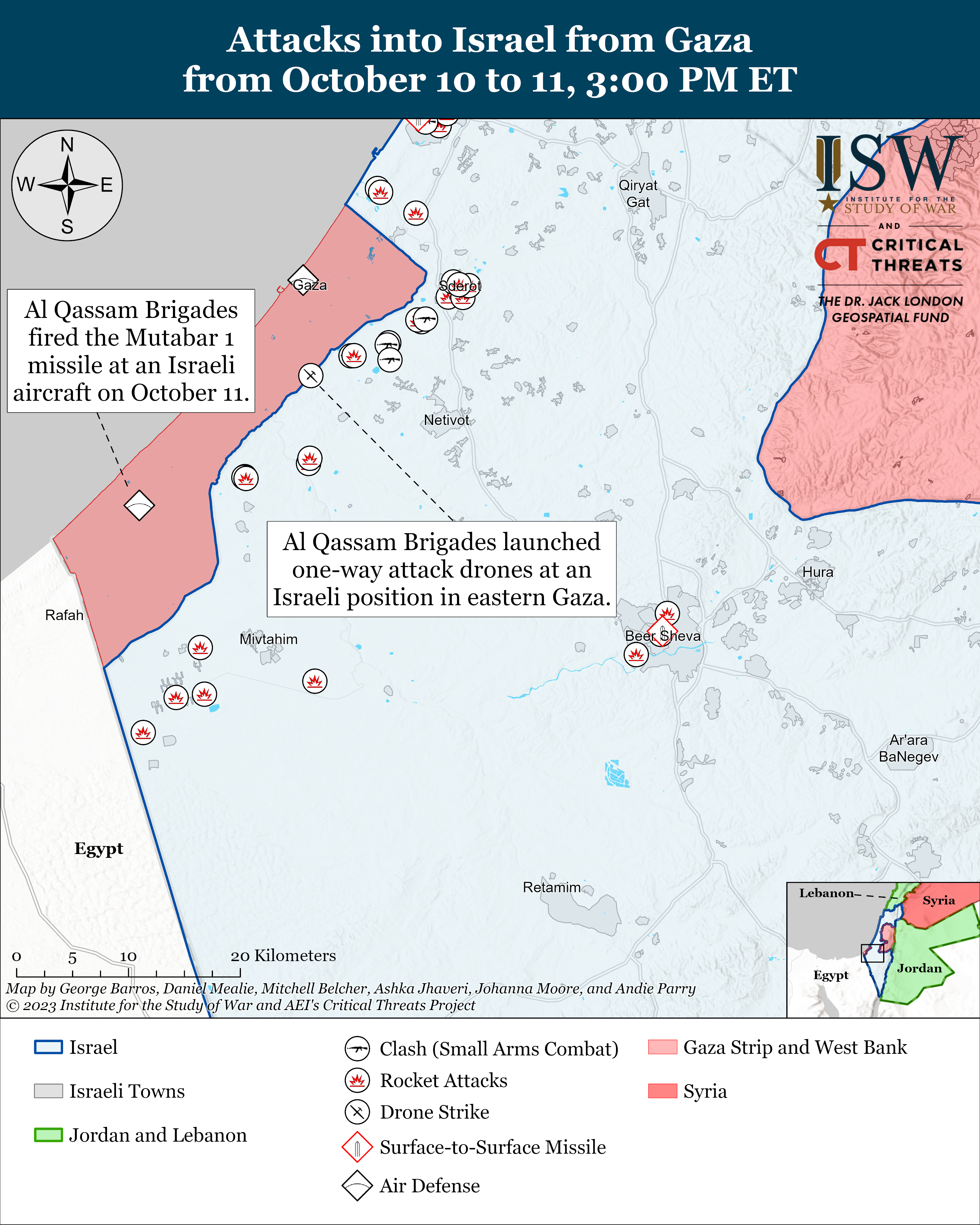
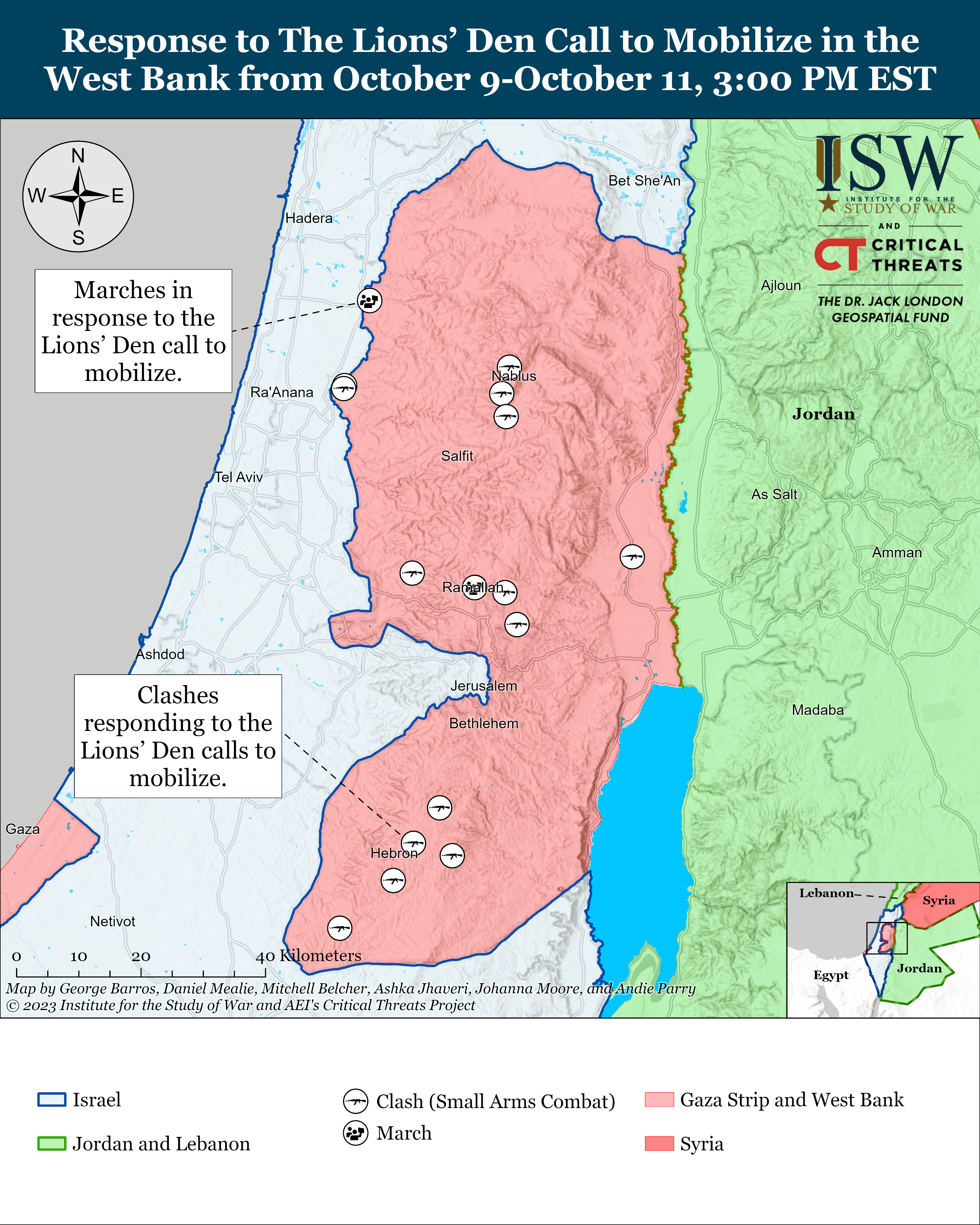
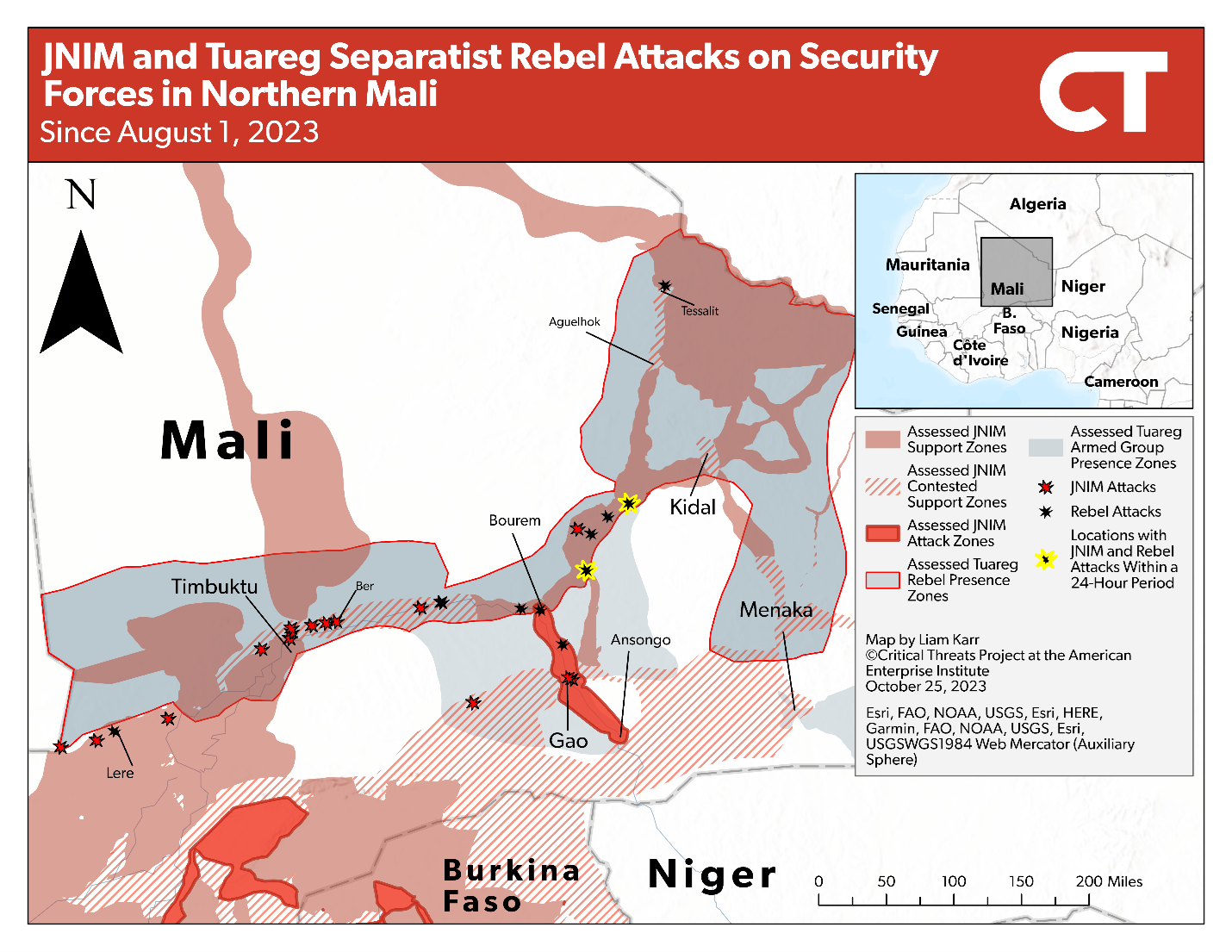
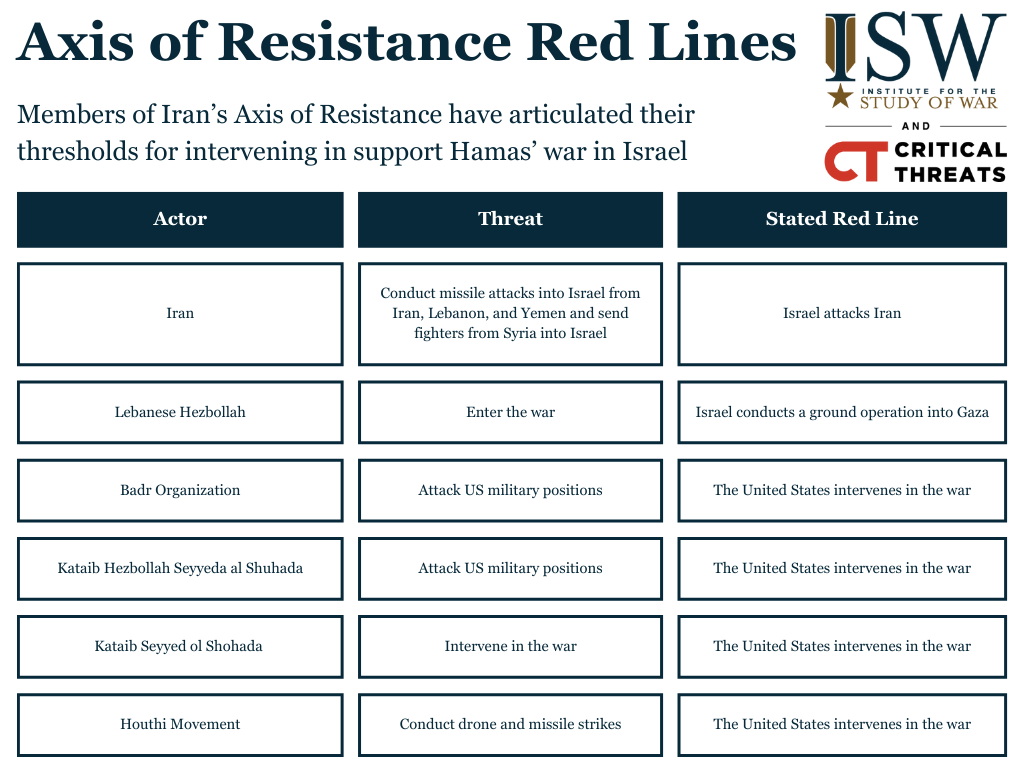
No comments:
Post a Comment